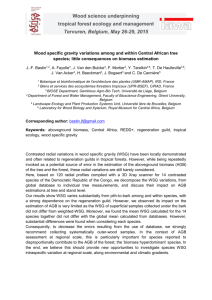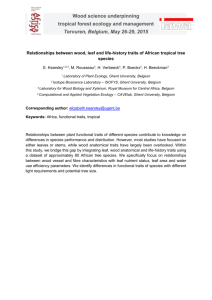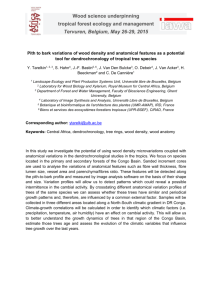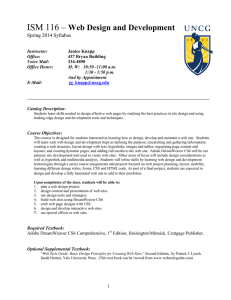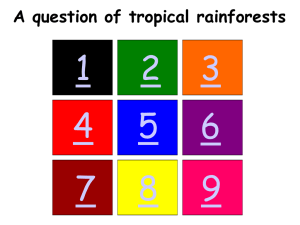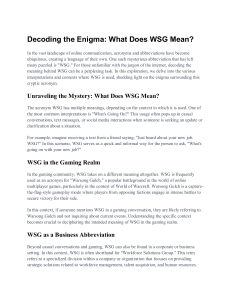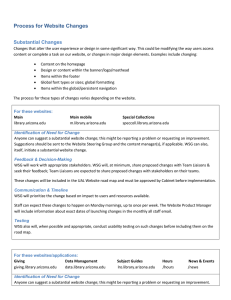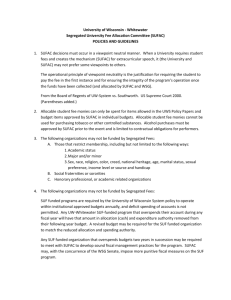de HAULLEVILLE - Royal Museum for Central Africa
advertisement
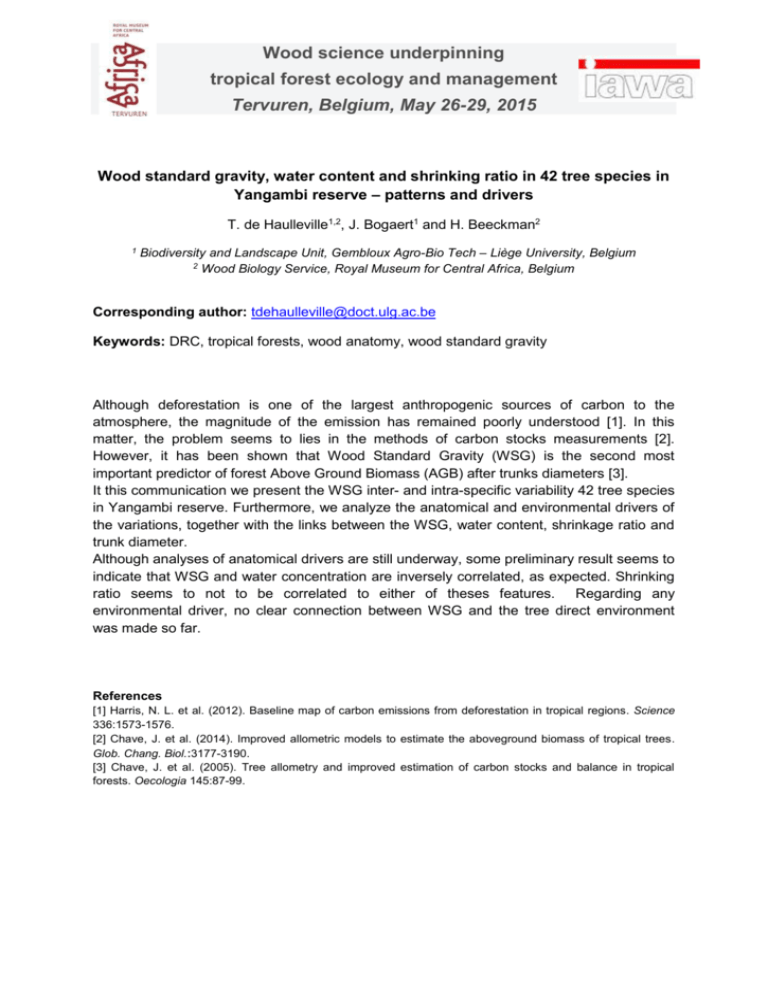
Wood science underpinning tropical forest ecology and management Tervuren, Belgium, May 26-29, 2015 Wood standard gravity, water content and shrinking ratio in 42 tree species in Yangambi reserve – patterns and drivers T. de Haulleville1,2, J. Bogaert1 and H. Beeckman2 1 Biodiversity and Landscape Unit, Gembloux Agro-Bio Tech – Liège University, Belgium 2 Wood Biology Service, Royal Museum for Central Africa, Belgium Corresponding author: tdehaulleville@doct.ulg.ac.be Keywords: DRC, tropical forests, wood anatomy, wood standard gravity Although deforestation is one of the largest anthropogenic sources of carbon to the atmosphere, the magnitude of the emission has remained poorly understood [1]. In this matter, the problem seems to lies in the methods of carbon stocks measurements [2]. However, it has been shown that Wood Standard Gravity (WSG) is the second most important predictor of forest Above Ground Biomass (AGB) after trunks diameters [3]. It this communication we present the WSG inter- and intra-specific variability 42 tree species in Yangambi reserve. Furthermore, we analyze the anatomical and environmental drivers of the variations, together with the links between the WSG, water content, shrinkage ratio and trunk diameter. Although analyses of anatomical drivers are still underway, some preliminary result seems to indicate that WSG and water concentration are inversely correlated, as expected. Shrinking ratio seems to not to be correlated to either of theses features. Regarding any environmental driver, no clear connection between WSG and the tree direct environment was made so far. References [1] Harris, N. L. et al. (2012). Baseline map of carbon emissions from deforestation in tropical regions. Science 336:1573-1576. [2] Chave, J. et al. (2014). Improved allometric models to estimate the aboveground biomass of tropical trees. Glob. Chang. Biol.:3177-3190. [3] Chave, J. et al. (2005). Tree allometry and improved estimation of carbon stocks and balance in tropical forests. Oecologia 145:87-99.
